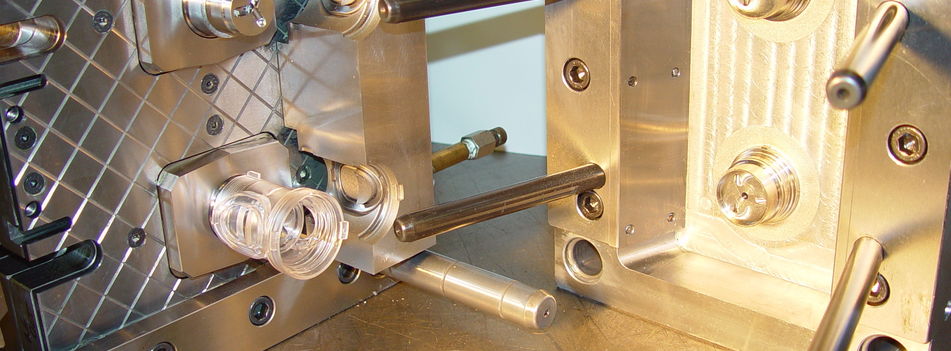Capabilities
Insert moulding
A preformed plastic or metal insert is incorporated into the component during the moulding stage or post-moulding stage to improve the strength of the moulding or add features for functionality
By adding the insert to the part during the moulding process, it is strongly attached to the rest of the component and this happens because strong mechanical bonds are created between the inserts and the mouldings.
The insert itself is designed so that it will be securely fastened in place when the polymer is moulded around it. This can be achieved by incorporating plates that stick out from the insert, threads on the sides or by the overall shape of the insert. By calculating the degree of shrinkage that will occur during the cooling cycle, designers can make sure that there's a tight fit of polymer around the insert to give the strongest possible join.
We have conventional horizontal machines ranging between 35-550 tonnes of clamp force, with vertical and rotary table machines with up to 160 tonnes of clamp force for insert moulding processes. These modern computer controlled machines enable us to support requirements for intricate and high tolerance injection and insert moulding in most thermoplastic materials.
Using robot load and unload systems combined with part-specific jigs and fixtures, we can manufacture high-volume insert moulded components in the most cost-effective way. Standard injection mouldings are produced as cost effectively as possible using equipment such as hot-runner systems, automatic runner / part separation and robot unloading wherever possible. Read our case studies here.
Our Arburg Allrounder vertical machines can be adapted extremely flexibly to meet a wide variety of requirements. Its special advantage is the configuration of the vertical clamping units as 'free space systems' with a fixed mounting platen positioned at the bottom to prevent the inserts from slipping and give easy access to the mould installation area.
Our 1500t Arburg vertical rotary machine is characterised by its ability to allow simultaneous insertion and removal of items during the injection process. The cycle times are minimised by the independent, fast, precise and energy-efficient servo-electric drive in the rotary table. The machine's versatile configuration options ensures that it's ideally suited to any insert production requirements and can also be easily integrated in automatic production lines. It would be completely achievable for automation solutions to extend through to complete turnkey solutions.
Working with us will allow you to reap the full benefits of our capabilities and knowledge to help make your components the best that they can be. To find out how we can assist you in your injection moulding or insert moulding requirements, please get in touch.

Many of the mould tools we run in our moulding machines have complex cores which operate in a plane 90 degrees to the tool opening plane.